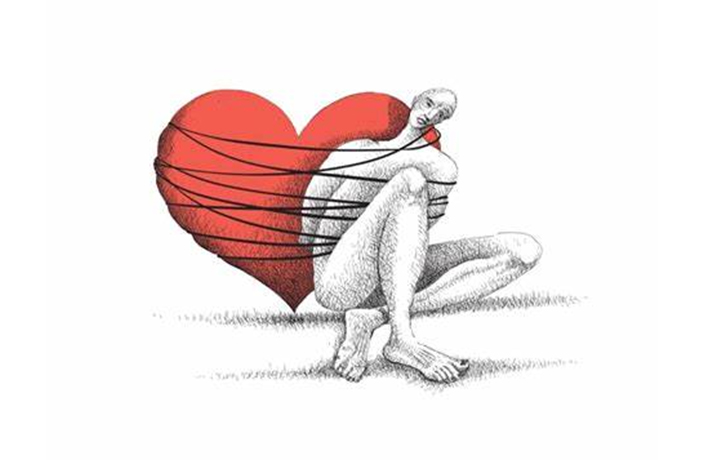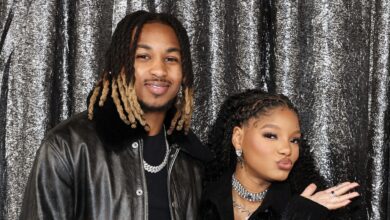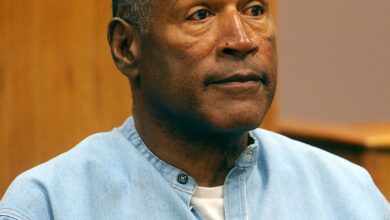Unmasking What Lies Beneath Toxic Types of Love

Beyond Shame is a mission-driven column, aimed at destigmatizing difficult human experiences, offering insights and strategies to empower personal growth, healing, and deeper connections.
I never told him, but he saved my life. Distraught and unable to find a way forward, I climbed to the roof of the hotel I was staying at overseas. I had decided I didn’t want to live – I couldn’t handle the emotional pain anymore.
I sat on the edge of the roof, trying to avoid being seen by cars down below or by the security cameras nearby, and for hours, I tried to muster up the strength to jump.
I had prepared texts to send to my friends, and as I looked down at the road below, suddenly he texted me from home.
And so I sat there replying to his texts; a guy I had only recently met before leaving on this trip, as if I wasn’t sitting on the edge of a hotel about to take my own life.
Slowly, over what felt like hours, the excruciating pain I felt started to go away, and a feeling of warmth began to surface deep inside.
“I love you.” His text stopped me from jumping. And the idea of having someone who loved me gave me something in that moment to feel hope around.
Eventually that hope, combined with my development of anorexia over the next few weeks, gave me something to cling to.
Looking back, this was the beginning of a damaging cycle I’d use to block out the sexual trauma I had experienced and to numb any painful emotions over the next decade of my life.
That hope it turns out, wasn’t love – instead, it was my deepest insecurities and traumas being coddled momentarily, my open wounds being fixed with a sparkly new band-aid.
And it felt good – until it didn’t. Until it became an unhealthy space for both of us.
Two abusive relationships later, an eating disorder, and the angst of being unable to commit to relationships with men who genuinely cared about me – I finally realized I had a problem, that there was something deeper beneath the narrative of misfortune I had sold myself on.
The Pain We Seek to Escape, Replicates
In my work, a point I strongly advocate is that it is essential to identify our emotional wounds – that is to know how our upbringing and difficult experiences from our past have shaped the ways we behave, relate and pursue the things we do.
Without this clarity, many of us continue to live with deep, unhelpful core beliefs that drive ongoing cycles of unhealthy patterns and behaviors; that sabotage all aspects of our health, relationships, work and mental wellbeing.
Through therapy, I came to learn that my own emotional wounds were:
1. Never feeling worthy of love
2. An unhealthy narrative of men
3. Experiences of sexual trauma
Not being aware of my emotional wounds for so many years caused me to seek out relationships that were unhealthy, painful and destructive, not only for me, but for the people I was trying to love.
Never Feeling Worthy of Love
This gave me a constant need to seek emotional validation – and even when I got it, I never believed it could be true.
The love I’ve understood from a young age was always conditional. When I excelled, when I behaved, when I performed to standard, when I pleased – praise and affection were given. And when I was less than perfect, I was worthless.
Because of this it has taken many years to understand that I never understood what healthy loved looked like in the first place, and to my shock, through therapy, I came to understand that what others would call an unhealthy relationship dynamic, to me felt like home.
The environment and relationships we grow up with and around shape our subconscious understanding of what feels like love to us, and most often – without our awareness – this trumps our rational thinking.
Dr. Harville Hendrix and Helen LaKelly Hunt specialize in Imago Relationship Therapy. The Latin word imago – meaning ‘image’ –refers to the “unconscious image of familiar love.”
According to Dr. Hendrix and Dr. Hunt, our minds unconsciously seek partners who resemble our caregivers, creating an idealized image called the Imago.
Although we consciously desire positive traits, we are more influenced by the negative traits of our caregivers, which are deeply imprinted due to the pain they may have caused us.
We have a subconscious need to heal the deficits we experienced in childhood and so we are drawn to partners who mirror familiar negative traits, hoping to heal and feel whole again.
For me, this was a life changing realization, one that allowed me move from “Why does this keep happening to me?” to understanding the fundamental relationship patterns I was subconsciously repeating in my life.
If this strikes a chord with you, do some reading on attachment theory and its impact on relationship patterns.
An Unhealthy Narrative of Men
The narratives I was often exposed to from the time I was four or five years old centered around men being unable to control their behaviors – especially when it came to women.
A women’s role, I observed, was to keep the family together, no matter what or how she felt.
And over many years I started to internalize that a man’s faithfulness was directly proportionate to a woman’s worth and that if you ‘let go’ of yourself – your physical appearance, your pleasing personality – you’d likely risk losing the love of your partner
It disturbs me to say this out loud, even after so many years, but it’s what I truly believed back then.
Because of these beliefs I always struggled with a deep sense of insecurity in my intimate relationships. Even when I met potential partners who I knew deep down were trustworthy people, it scared me to my core.
How can you truly accept a healthy type of love if your fundamental and subconscious belief is that it doesn’t really exist? My answer is clear – I was never able or ready to.
Experiences of Sexual Trauma
When I was younger a lot of traumatic things happened, and for my own comfort, I’ll just group it all into a blur I call sexual trauma and intimate abuse.
Through these experiences, through seeing and living through some pretty dark things, my sense of value, trust, safety and self-worth in the world was shattered and solidified at the same time.
I came to believe that my existence and worth was solely dependent on my body and that having needs, boundaries, a voice or any part of you that was confrontational only led to terrible things.
In addition to this, I developed a sense of shame around these experiences that meant I never spoke of or sought help from anyone. Unknowingly I lived with PTSD for all this time, which at its worst sent me through spirals of panic attacks, bulimia and further trauma.
Breaking out of these cycles happened after I sought therapy many years later. Therapy didn’t erase the past or my emotional wounds – but what it did was help open a channel in a safe space to the emotions and experiences I had repressed for so long.
Having a safe space to face the past helped to alleviate the subconscious hold that these deep, emotional wounds had on my life, and over time allowed me to clearly identify my unique emotional wounds and the triggers that activate them, at times still to this present day.
It’s important that I share my own wounds and triggers with you to demonstrate that the mess we often feel – that blur of unexplainable emotions and reactions that feel off, shameful or overly sensitive, that lead us to question “What’s wrong with me?” – are there for a reason.
If anything, it is often our brain and bodies trying to tell us that there is something deeper we need to address. And when we do, that mess slowly becomes clearer. And with clarity, we can start to take meaningful and impactful steps towards change and growth.
For me – my emotional wounds and associated triggers looked something like this…
Emotional Wound: Never Feeling Worthy of Love
Triggers
-
Criticism from my partner
-
The feeling of being abandoned
-
Feeling unaccomplished
-
Disagreements
-
Guilt around voicing my needs or concerns
-
Guilt around upsetting my partner
Reactions When Triggered
-
Shutting down emotionally
-
Retreating into silence
-
Crying uncontrollably
-
Excessive drinking
-
Appeasing and trying even harder to be ‘loveable’
-
Stepping on eggshells
-
Anger and defensiveness
Emotional Wound: An Unhealthy Narrative of Men
Triggers
-
Feeling physically unattractive
-
Not being prioritized
-
Witnessing infidelity
-
Hearing of infidelity
-
Lying
-
Witnessing a lack of self-control
-
Feeling out of control
Reactions When Triggered
-
Disordered eating
-
Overemphasis on my physical appearance
-
Trying even harder to be ‘desirable’ or good enough
-
Physically running away or breaking off relationships
-
Shutting myself off emotionally
-
Travelling to create physical distance or escape from my partners
Emotional Wound: Experiences of Sexual Trauma
Triggers
-
Aggressive language
-
Feeling trapped emotionally and physically
-
Witnessing violence
-
Being touched unexpectedly
-
Being grabbed forcefully
-
Unexpected loud noises
-
Unsettling silence
-
Aggressive drinking
-
Aggressive looks
-
Isolated and unfamiliar places
-
Images of sexual of physical violence
Reactions When Triggered
-
Panic attacks
-
Disordered eating
-
Suicidal thoughts
-
Overreactions to unexpected noises or touch
-
Depression
-
Excessive drinking
-
Excessive need for emotional validation
-
Flash backs of sexual trauma
-
Physical and emotional pain in related areas of my body were trauma occurred
Knowing the relationship between our emotional wounds and triggers gives us a roadmap to trace overwhelming emotions, in order to differentiate whether the anxiety we feel in the present has valid roots for concern or if we’re being triggered by something that originates from the past.
Doing work to heal from our past doesn’t mean erasing its impacts – it’s about regaining control over our lives by developing a deep awareness and understanding of ourselves and the unmet needs we subconsciously seek to fill.
In the direct context of romantic relationships, building an awareness around our emotional wounds empowers us to break unhealthy relationship patterns so that we can learn to love and appreciate ourselves and eventually – if and when we’re ready (and I put an emphasis on ready) – we can choose and be able to connect with others in healthier and more meaningful ways.
Hurt People, Hurt People
For the longest time I used to focus only on how my partners hurt me without ever looking at myself. But looking back, it’s empowering for me to say that I’m not proud of the person I was back then.
I wasn’t my best self, not even close. And even though I believed my intentions were good, the fact is I hurt people and until today, those are the only regrets I have in my life.
Because I never built awareness around why I was the way I was, my reactive emotions became fuel and justification for my actions.
The saying “Hurt people, hurt people” is true. And even if we don’t intend to hurt others, if there are deep experiences from your past that you haven’t addressed, it’s likely to be showing up in your life somehow, someway.
We can’t control the circumstances that have led us to where we are today, but we can control the choices we make around who we want to be tomorrow.
There’s an amazing freedom that comes with radical responsibility and building self-awareness. One that I believe is more powerful than anything else we can do to ‘grow’ in the relationships we have with ourselves and others. I know it isn’t easy but I promise you it’s worth it – if you’re willing.

Lorraine Le is the Founder of Mental Health platform Inward Living, and CEO of The Kindness Dealer, a confidential and bespoke consultancy that specializes in in-depth sessions for people to gain a ‘birds-eye view’ of their struggles and the influences that have and continue to shape them.
To get in touch or follow her advocacy and work, contact Lorraine through the WeChat ID: Inwardasia or follow @growwithlorraine on Instagram, and @growwithlorraine on YouTube.
READ MORE:
[All images courtesy of Lorraine Le]



